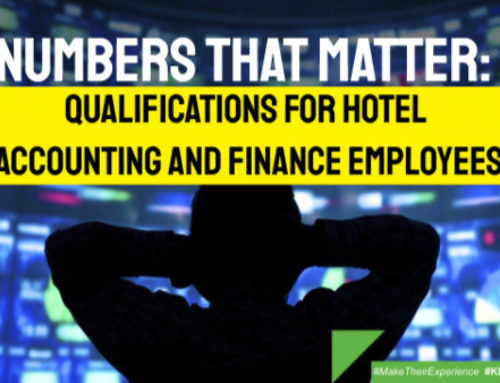.
.
Unproductive or poor employees can be a detriment but firing them can be very difficult.
Here are tips to professionally, gracefully and safely fire an employee.
Welcome to another edition of Hospitality Property School.
I am your instructor, Gerry MacPherson.
.
Introduction
If you’re an independent hotel, resort, inn or bed and breakfast owner or manager and you’re having a problem with an employee, you have two choices:
- You can try to work with them, and help them improve their performance or,
.
- Fire them
.
Firing someone is not a decision you can take lightly.
.
The cost of turning over an employee can be high; it could cause your employee emotional and financial stress; it could cause distress with your other employees; depending on what country are in, it could open you up to lawsuits, but unfortunately, there are times when this is your only option.
.
 |
Books with Tips & Strategies for Your Hotel, Resort, Inn,
|
.
Before you fire an employee
As soon as you know there’s a problem, act quickly.
Sit down with your employee and discuss the problem. Ask them what they think is the cause and if possible offer suggestions for improvement.
.
- Make sure you tell your employee about your concerns and that it could be grounds for termination.
.
- If it is a problem with the procedure, remind them that they accept that these terms when they were hired or when the changes were made.
.
- Give them a warning if their work is being affected due to continually missing work or insubordination.
.
I have seen both property owners and managers that evaluate their employees once a year and some that never evaluate their employees.
.
I recommend you make it a practice to talk to each of your employees at least every couple of months about their performance, how they feel about their job and how things could improve.
.
During these meetings, you should talk about your concerns.
.
While it is your business, you have to consider your bottom line and the effect an unproductive employee would have on the rest of your staff, you should also consider their personal situation.
.
If they have lost focus due to outside factors such as health concerns, relationship problems, divorce, death in the family, or financial problems, these are all issues that may be temporary and by everybody pulling together, you could save the loss of a valuable employee.
.
This might give the employee the opportunity to resolve their problems and improve their performance in a timelier manner.
.
Make sure to have a policy in your operations manual explaining grounds for termination and go over it with the employee.
.
Document your conversations, and then both you and your employee sign the document or send them an e-mail with a record of the conversation and have them reply that they have read it.
.
It is very important to keep a paper trail as well as a record of all disciplinary actions.
.
Give them a plan of action, specific improvements or changes required in order for them to keep their job, and clear deadlines of when these improvements or changes must be seen.
.
Set up a time-line. Not all problems can be solved as fast as we would like, but a timeline and goals with deadlines will help you see if there’s any improvement, or not.
.
If improvement is not shown, make it clear to the employee that termination is the next step.
.
.
Make a plan
Think about your employee’s responsibilities and who you might reassign them to or if you have to hire a new employee. (Be careful if you are planning to hire a new employee. If the employee you are thinking of firing sees the writing on the wall, they might start looking for a new job or if they find their job description for your company posted, they might take offence or worse, retaliatory measures.)
.
If you feel the employee might fight the firing, think about offering a couple of weeks or month’s pay in exchange for them signing a severance agreement.
.
When the time comes to fire your employee, do it privately in a place where both of you can speak comfortably. There might be items that have to be discussed that need not be shared openly.
.
Get to the point immediately, actually, it’s a good idea to practice what you’re going to say before the meeting.
.
If you have followed all the steps leading to this meeting, the employee should not be surprised and you do not have to go over the whole thing again.
.
Just say “I’m sorry things have not changed, I’m going to have to let you go.”
.
- You should have written a document of the next steps and then go over it verbally. Items you might cover could include: emptying out their workspace and returning any property, supplies, or equipment.
.
- Explaining the severance package, if applicable
.
In most cases, the person you just let go or fired is not a bad person, just was not suited for the job.
.
You may offer to give them a reference regarding their reliability, their attitude, their teamwork, whatever parts of the job they were successful with.
.
Thank them for the work they performed well, and wish them luck on their future endeavours.
.
If you have followed the steps, your ex-employee should not be surprised and hopefully, the parting of the ways will be cordial.
.
Just in case, be ready in case they get upset.
.
If they start lashing out emotionally or get insulting, do the same as you would do with an angry guest, don’t respond. Sure that might not be fair to you, but it might be what they need to get through this situation.
.
If for some reason they get violent, don’t hesitate, call for help and police if needed.
.
Are these making sense? Let me know in the comments.
.
.
Stay professional
It is hard to fire someone, especially if you know they need the job but you have to remember, this is your business and you’re responsible for your guests and your other employees.
.
.
In conclusion
When you have an unproductive or disruptive employee at your property it can lower morale, turn off guests and cost you money. The problem for many of us is how to fire an employee.
.
As soon as you know there’s a problem, act quickly by sitting down with your employee and discussing the problem. Ask them what they think is the cause and if possible offer suggestions for improvement. If that does not work, make a plan
.
Think about your employee’s responsibilities. Who you might reassign them to or if you have to hire a new employee and when the time comes to firing your employee, do it privately in a place where both you and the employee can speak comfortably. Above all, you have to stay professional.
.
It is never an easy situation but in many cases, it can be the best thing for both you and the employee.
.
If you have tips you have used when firing an employee, I would like to see them.
Leave them in the comments.
.
You will have access to this post for six weeks before it gets locked in the “vault” for Hospitality Property School Group members only. When you see that we have something new, don’t mark it “Unread” or file it away in the belief you’ll read it later because you might miss your chance.
.
To see all the other valuable material you’d have access to as a member of the Hospitality Property School Group, check out the short video in the episode post-show notes.
.

.
In the next episode, I will talk about 18 ways to become the best front office manager.
.
.
That’s it for today’s episode,
Until next time, have a fun day.
.
PS. Have you seen the latest INNsider Tips? You can find the link in the show notes.
.
.
⇒ TO READ OR LISTEN TO THIS EPISODE ON KEYSTONE HOSPITALITY PROPERTY DEVELOPMENT:
https://keystonehpd.com/The-Right-Wrong-Ways-to-Fire-an-Employee-219
.
.
Get Your INNsider Tips
https://keystonehpd.com/Sign-up-for-INNsider-Tips
.
.
Join one of your private groups
https://keystonehpd.com/private-groups
.
.
Say hi on social:
Facebook: https://www.facebook.com/KeystoneHDC
.
Twitter: https://twitter.com/KeystoneHDC
.
Linkedin: https://www.linkedin.com/company/keystone-hospitality-development
.
.
Listen to The Hospitality Property School PODCAST here:
https://keystonehpd.com/itunes-podcast
.
https://www.spreaker.com/keystonehdc
.
.
YouTube
.
.
A Division of Keystone Hospitality Property Development
.






